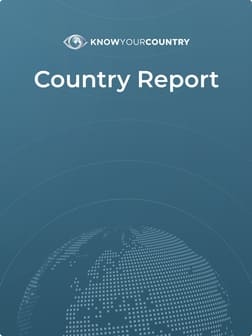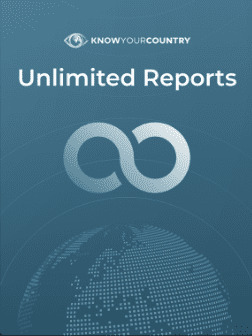
Russian Federation Country Summary
Sanctions
EU & US sanctions in place
FATF AML Deficient List
No
Terrorism
Corruption
US State ML Assessment
Criminal Markets (GI Index)
EU Tax Blacklist
Offshore Finance Center
Background Information
Anti Money Laundering
MONEYVAL Statement
On 17 March 2022 the Russian Federation was excluded from the Council of Europe. The decision was taken by the Committee of Ministers in an extraordinary meeting and in the context of the procedure launched under Article 8 of the Statute of the Council of Europe. By consequence, Russia also ceases to be a member of MONEYVAL, after 25 years of engagement in the Committee, which it joined in 1997.
FATF Status
The Russian Federation is not on the FATF list of AML Deficient countries however, due to the invasion of Ukraine, FATF has published warning statements relating to threats to the integrity, safety and security of the international financial system arising from the Russian Federation’s aggression in Ukraine.
Compliance with FATF Recommendations
The last Mutual Evaluation Report relating to the implementation of anti-money laundering and counter-terrorist financing standards in Russia was undertaken in 2019. According to that Evaluation, Russia was deemed Compliant for 7 and Largely Compliant for 28 of the FATF 40 Recommendations. It was also deemed Highly Effective for 2 and Substantially Effective for 4 with regard to the 11 areas of Effectiveness of its AML/CFT Regime.
US Department of State Money Laundering assessment (INCSR)
Russian Federation is categorised by the US State Department as a Country/Jurisdiction of Primary Concern in respect of Money Laundering and Financial Crimes.
Overview
Russia has developed a robust AML/CFT legal framework with Rosfinmonitoring, the FIU, at its center. Corruption, misappropriation and embezzlement of public funds, tax evasion, fraud, and drug trafficking generate significant amounts of proceeds. There is a large shadow economy approaching 13 percent of Russian GDP, although cash in circulation has declined from 12.4 percent of GDP in 2007 to less than 10 percent in 2019. Financial flows from illicit activity linked to Russia have threatened weak financial institutions in neighboring countries; however, criminal proceeds from Russia also make their way to global financial centers, often through opaque shell companies. To shield sanctioned Russian individuals and entities from the effects of financial sanctions, the Russian government softened some reporting requirements leading to a decrease in transparency. Although many Russian banks controlled by criminal factions have been closed, supervision over remaining institutions, including a significant portion of stateowned banks, is not wholly risk-based or adequate from an AML standpoint.
Sanctions
Following the invasion of Ukraine by Russia in February 2022, the US, EU, UK, Canada and many other nations have broadened sanctions against Russia by the inclusion of a number of other individuals and entities in the SDN lists.
It should be noted that these sanctions are updating on an almost daily basis.
Bribery & Corruption
Rating (100-Good / 0-Bad)
Transparency International Corruption Index 26
World Governance Indicator – Control of Corruption 19
Corruption significantly impedes businesses operating or planning to invest in Russia. High-level and petty corruption are common, especially in the judicial system and public procurement. The business environment suffers from inconsistent application of laws and a lack of transparency and accountability in the public administration. Russia’s regulatory inefficiency substantially increases the cost of doing business and has a negative effect on market competition. The Russian Federal Anti-Corruption Law requires companies to actively implement anti-corruption compliance programs. However, compliance with these provisions in practice is lagging behind. Russian law criminalizes active and passive bribery, facilitation payments, gifts and other benefits. However, effective enforcement of anti-corruption legislation is hindered by a politicized and corrupt judicial system. For further information - GAN Integrity Business Anti-Corruption Portal
Economy
Russia has undergone significant changes since the collapse of the Soviet Union, moving from a centrally planned economy towards a more market-based system. Both economic growth and reform have stalled in recent years, however, and Russia remains a predominantly statist economy with a high concentration of wealth in officials' hands. Economic reforms in the 1990s privatised most industry, with notable exceptions in the energy, transportation, banking, and defence-related sectors. The protection of property rights is still weak, and the state continues to interfere in the free operation of the private sector.
Russia is one of the world's leading producers of oil and natural gas, and is also a top exporter of metals such as steel and primary aluminium. Russia's reliance on commodity exports makes it vulnerable to boom and bust cycles that follow the volatile swings in global prices.
The economy, which had averaged 7% growth during 1998-2008 as oil prices rose rapidly, has seen diminishing growth rates since then due to the exhaustion of Russia’s commodity-based growth model.
A combination of falling oil prices, international sanctions, and structural limitations pushed Russia into a deep recession in 2015, with the GDP falling by close to 4%. Most economists expect this downturn will continue through 2016. Government support for import substitution has increased recently in an effort to diversify the economy away from extractive industries. Although the Russian Ministry of Economic Development is forecasting a modest growth of 0.7% for 2016 as a whole, the Central Bank of Russia (CBR) is more pessimistic and expects the recovery to begin later in the year and a decline of 0.5% to 1.0% for the full year. Russia is heavily dependent on the movement of world commodity prices and the CBR estimates that if oil prices remain below $40 per barrel beyond 2016, the resulting shock would cause GDP to fall by up to 5%.
Agriculture - products:
grain, sugar beets, sunflower seeds, vegetables, fruits; beef, milk
Industries:
complete range of mining and extractive industries producing coal, oil, gas, chemicals, and metals; all forms of machine building from rolling mills to high-performance aircraft and space vehicles; defence industries (including radar, missile production)
Exports - commodities:
petroleum and petroleum products, natural gas, metals, wood and wood products, chemicals, and a wide variety of civilian and military manufactures
Exports - partners:
Netherlands 11.9%, China 8.3%, Germany 7.4%, Italy 6.5%, Turkey 5.6%, Belarus 4.4%, Japan 4.2% (2015)
Imports - commodities:
machinery, vehicles, pharmaceutical products, plastic, semi-finished metal products, meat, fruits and nuts, optical and medical instruments, iron, steel
Imports - partners:
China 19.2%, Germany 11.2%, US 6.4%, Belarus 4.8%, Italy 4.6% (2015)
Investment Climate - US State Department
American firms seeking to invest in the Russian Federation should be aware that the Russian investment climate continues to be marked by high levels of uncertainty, corruption, and political risk, making thorough due diligence and good legal counsel essential for any potential investment. Conditions for foreign investment are unlikely to improve in the near term. Foreign direct investment flows in Russia during 2015 were USD 6.7 billion, a decline of 92 percent from the figure two years earlier, according to the UN Conference on Trade and Development. This decline in investment reflected the increased risks that investors faced when doing business in Russia.
Russia’s real gross domestic product (GDP) contracted by 3.7 percent in 2015. The International Monetary Fund expects a further 1 percent contraction in 2016. The fall in the global price of oil has hit Russia’s economy hard: oil and gas production has traditionally accounted for approximately 20 percent of GDP, two-thirds of exports, and half of federal government revenues. The Russian ruble also depreciated 55 percent against the U.S. dollar through 2015. Capital outflows in 2015 decreased to USD 57 billion, after a peak of USD 151.5 billion in 2014.
Russia’s attempted annexation of Crimea in March 2014 is not recognized by the U.S. government. U.S. investors in Russia must ensure they are in full compliance with U.S. sanctions on designated Russian firms and individuals. These measures include a prohibition on the refinancing of debt beyond 30-days on sanctioned entities, restrictions on the export to Russia of certain kinds of equipment for the energy sector, and a complete ban on doing business with those entities or individuals identified by the U.S. Treasury Department as “specially designated nationals.” Specific sanctions designations are available on the U.S. Treasury’s website: www.treasury.gov.
Long-standing concerns about the rule of law in Russia persist. Several new laws in 2015 gave the Russian Constitutional Court new powers to disregard foreign arbitral decisions, while 2014 changes to the Russian high court have cast doubts on its ultimate autonomy. Russia’s judicial system is heavily biased in favor of the state, leaving investors with little recourse in the event of a legal dispute with the government. High levels of corruption in the Russian government compound this risk.
Economic activity carried out by state-owned enterprises (SOEs) is estimated to comprise over half of Russia’s GDP. Most government initiatives in 2015 point to a stronger government influence in SOE activities, including placing senior government officials on major SOE boards, dictating the percentage of SOE purchasing that must come from small and medium enterprises, and requiring Russian-made equipment purchases for government-funded projects.
Regulations require Russian government approval for foreign firms to invest in “strategic sectors” and, in some cases, ban majority foreign ownership.
Though a policy goal prior to Russia’s 2014 attempted occupation of Crimea and aggression in Ukraine, import substitution has subsequently become a central tenet of Russian government policy, with the aim of shifting Russia’s reliance on imported products to goods either produced domestically or by “friendly” nations. The Russian government hopes to achieve a higher level of self-reliance through a combination of localization and procurement restrictions. The most attractive sectors for foreign investment in Russia historically include wholesale and retail trade, finance and insurance, manufacturing, and mining. In 2015, the Central Bank of Russia created a national payment card system (NSPK) to process all domestic credit card transactions for Russian cardholders.
International payment card systems continue to process the domestic transactions of foreign cardholders and the international transactions of Russian cardholders. Russia also enacted a new law in 2015 that requires all companies processing the personal data of Russian citizens to store that data on servers located in Russia.
Country Links

Buy Full Russian Federation Report
$25 one time payment
- Risk Analysis
- Corruption
- Economy
- Sanctions
- Narcotics
- Executive Summaries
- Investment Climates
- FATF Status
- Compliance
- Key Findings

Unlimited Reports
$40 Monthly
